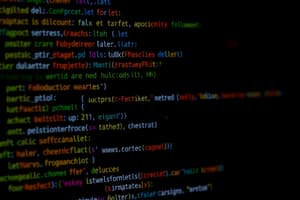Podcast
Questions and Answers
What is a key reason to validate user input in a web application?
What is a key reason to validate user input in a web application?
- To display error messages to users
- To improve website loading speed
- To store user data in a database
- To prevent malicious input and ensure data consistency (correct)
Which of the following is a type of client-side validation?
Which of the following is a type of client-side validation?
- SQL validation
- PHP validation
- JavaScript validation (correct)
- HTML validation
What is the purpose of sanitizing user input?
What is the purpose of sanitizing user input?
- To store user data in a database
- To display error messages to users
- To prevent SQL injection and cross-site scripting (XSS) attacks (correct)
- To validate user input
Which PHP function is used to validate and sanitize input data?
Which PHP function is used to validate and sanitize input data?
What should you do with user input before storing it in a database?
What should you do with user input before storing it in a database?
Why should you avoid using mysql_* functions?
Why should you avoid using mysql_* functions?
What is a best practice when working with user input and databases?
What is a best practice when working with user input and databases?
Flashcards are hidden until you start studying
Study Notes
Form Handling in PHP
Form Validation
- Why validate?: Prevent malicious input, ensure data consistency, and improve user experience
- Types of validation:
- Client-side validation (JavaScript): Fast, but can be bypassed
- Server-side validation (PHP): More secure, but slower
- PHP validation techniques:
- Check for empty fields
- Validate data formats (e.g., email, phone number)
- Use regular expressions (regex) for pattern matching
- Compare user input with expected values
Sanitize User Input
- Why sanitize?: Prevent SQL injection and cross-site scripting (XSS) attacks
- PHP sanitization functions:
htmlspecialchars(): Convert special characters to HTML entitiesfilter_var(): Validate and sanitize input data (e.g., email, URL)trim(): Remove whitespace from input stringsstripslashes(): Remove backslashes from input strings
- Best practices:
- Sanitize user input before storing it in a database
- Use prepared statements with parameterized queries to prevent SQL injection
- Avoid using
mysql_*functions, which are deprecated and vulnerable to SQL injection
Form Handling in PHP
Form Validation
- Form validation is necessary to prevent malicious input, ensure data consistency, and improve user experience
- There are two types of form validation: client-side and server-side
- Client-side validation is faster but can be bypassed, while server-side validation is more secure but slower
- PHP validation techniques include:
- Checking for empty fields
- Validating data formats (e.g., email, phone number)
- Using regular expressions (regex) for pattern matching
- Comparing user input with expected values
Sanitizing User Input
- Sanitizing user input is necessary to prevent SQL injection and cross-site scripting (XSS) attacks
- PHP sanitization functions include:
- htmlspecialchars(): Converting special characters to HTML entities
- filter_var(): Validating and sanitizing input data (e.g., email, URL)
- trim(): Removing whitespace from input strings
- stripslashes(): Removing backslashes from input strings
- Best practices for sanitizing user input include:
- Sanitizing user input before storing it in a database
- Using prepared statements with parameterized queries to prevent SQL injection
- Avoiding the use of mysql_* functions, which are deprecated and vulnerable to SQL injection
Studying That Suits You
Use AI to generate personalized quizzes and flashcards to suit your learning preferences.




